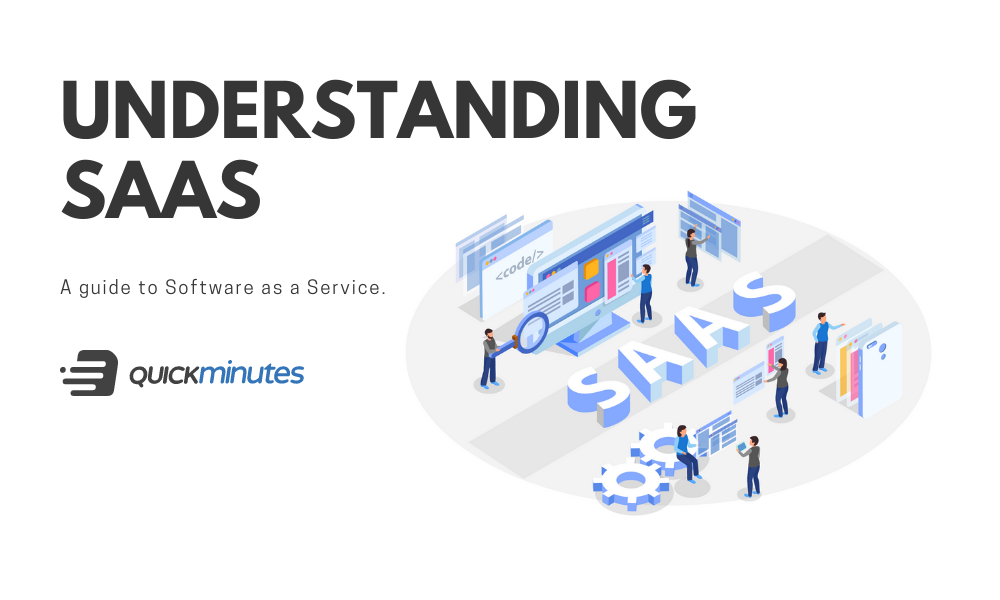
Understanding SaaS
A guide to Software as a service
What is SaaS?
Back in the day, installing software was a whole different ball game which required users to buy CDs or DVDs to load softwares onto their computers. Courtesy to high-speed internet, now we can exchange volumes of data between local computers and external servers quickly. The tech industry has been steadily moving towards cloud computing, a computing environment in which you are not bound by a local machine or software.
SaaS literally translates to Software as a Service. SaaS apps are essentially software applications delivered over the internet, accessible from anywhere and from almost any device. The SaaS providers host the organization’s apps and deliver them to the end user through the internet.
Who uses SaaS?
SaaS is usually developed as a niche software, solving a specific problem.
SaaS applications are still fairly limited and mainly concentrated in HRM, CRM, sales, procurement and collaboration, and communication. However, with cloud-technology rapidly gaining momentum and transforming IT, SaaS would only grow in demand. With a low cost of entry, many small and medium businesses have started reaping the benefits of these softwared.
Since SaaS applications are mostly delivered in a feature packed format which continually improves through upgrades, the subscribers pay a fee model, on a monthly or annual basis. The softwares are priced on different usage parameters such as the number of transactions or the number of users accessing the app.
Why use SaaS?
- Cost effective - SaaS usually resides in a shared or multi-tenant environment, where the hardware and software license costs are low compared with the traditional model. This significantly reduces the costs of the company as no physical equipment such as servers are required in the workplace environment.
Furthermore, transferring the workload away from internal IT teams to an external vendor, eliminates additional work hours or downtime and therefore saving on time and costs both.
Another advantage is that even small and medium businesses can rapidly scale as SaaS makes it easier for them to use software which otherwise they would not, due to the high cost of licensing.
- Scalability and Accessibility - Yet another feature of SaaS is that it offers fantastic flexibility. Since the software is externally hosted, businesses opting for SaaS can change their usage plan without having to worry about anything. Given their web-based use, SaaS solutions can be accessed from anywhere in the world which gives the users enhanced accessibility in terms of data. The users can also work effectively from anywhere, making it a lot easier for home workers and people who work at multiple sites.
- High Compatibility - In the conventional method of software installation, updates can be very time consuming and costly on the pocket. Hardware or software version discrepancies at times lead to compatibility issues between members of the workforce. SaaS eliminates these hindrances and makes the work flow smoother by allowing the users to simply log in to the latest upgraded version of their softwared. It is the SaaS provider's responsibility to manage updates and upgrades, removing the need to install patches.
SaaS assures that the end-user always has access to the most up-to-date version of the software.
- High Adoption Rates - Since SaaS solutions are delivered over the web, they usually have much smaller learning and adapting involved as the employees are already used to working on the internet. This results in rapid adoption by the workforce, hence saving time while providing comfort.
- Try it before you buy it - Most SaaS service providers offer free trials of the products, at times including their premium versions. This helps the end customers in making the right choices while deciding which software best suits their needs before making any investment in the softwares.
- Amplified Security - In recent years, data protection and GDPR have become a vocal point with growing awareness around data. Organizations often feel reluctant when moving to a SaaS model with concerns over who has access to their data and how it may be used.
These days, cloud hosting services are generally built to address the privacy demands of customers and help safeguard sensitive data. Depending on the type of technology, most SaaS services have built-in disaster recovery enabling information to be quickly maintained or resumed in the event of a disaster. When choosing a SaaS provider, it’s important to evaluate their security factors, service level agreements and the migration process to ensure best security.
Conclusion
SaaS looks like a promising future of all computing. Lower costs, easy upgrades and better scalability are the top contributing factors for that. Many small and medium businesses are now looking to ‘rent’ the software instead of heavily investing in hardware and ‘regular’ software licenses.
They also don’t have to worry about upgrades, security patches, and deployment across the board, while greater scalability and flexibility means they can scale as they grow. In the coming time, the rise of cloud computing in general and SaaS, in particular, looks pretty certain. As we are now well beyond early trial implementations of SaaS, so if done right, businesses can achieve pivotal and sustainable revenues and meet their requirements as they grow, without worrying about most of the technical stuff and IT investments.
QuickMinutes Updates